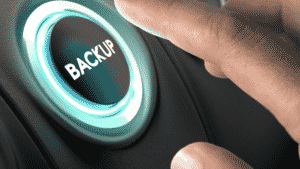It’s a crazy thought, but employees sharing something like funny cat GIFs can actually have a positive impact on team collaboration—and thus employee productivity. Now, we know you might be wondering: “Cat GIFs, really? How could those possibly help?”
Before you discount the idea out of hand, check out the lively discussion in this video, where we explore the impact of cat GIFs and other such seemingly frivolous items.
Right at the start of the video, the crew start talking about how to get people to understand Microsoft Teams. Like with any software, a first-time user of Teams probably doesn’t know what all of the settings are or how to use them. So, new users might gloss over a lot of this “stuff” that they aren’t familiar with.
It’s important to get people to engage with software—and learning by doing is often the simplest way. The problem is, if people aren’t familiar with the software, they’ll often actively avoid using. So, how do you get people to engage with Microsoft Teams—and become experienced with it?
The recommendation in the video is to “send them cat pictures.” This might seem silly. In fact, in the video, one of the participant’s even says so:
“When I first saw the GIFs and stuff… the first thing on my mind was like turn it off, this is dumb, this distracts productivity, which is not business-oriented… Ten years ago, I was like turn off everything fun, because we’re here to work… Until I did my first big Teams training.”
Why Send Cat GIFs (and Other Fun Things)?
So, what was revealed in that Teams training that changed minds about sending cat photos or other fun things in Teams? Well, the thing was that the training didn’t occur between managers and admins—it was all team members. The rank and file people who actually work together on a daily basis to get things done.
When people were told to go nuts and start messaging each other, we expected to see a bunch of blasé “hey, good to be working with you” messages and similar bog-standard platitudes. Instead, what everyone sent to each other were cat GIFs and funny little reactions.
It was that moment that brought an epiphany: “That’s what it’s for. It’s to drive adoption.” Cat GIFs, memes, and other humorous, cute, or entertaining things are what push people to embrace new technologies and tools with more enthusiasm than “hey, here’s TPS report 57398-B.” People will play with the cat GIF and other funny things so much that they’ll start to realize the true potential of the platform.
It can be summed up with the line: “I gave them a toy. And now, they’re gonna play with that toy. And eventually, they’re going to send something funny to their boss.”
Employees will create their own chat channels dedicated to these humorous items with names like #Randomfunnythings or #Officememes to share fun things with their friends and coworkers. People will check in to these channels—driving engagement with the software and making it feel more like a natural part of that employee’s routine.
Removing the Stiltedness from Communications
One of the wonderful things about apps like Teams is that it’s a lot less formal than business emails. In the video, the team reminisces about the time and effort that used to be expended on being super-formal in their communications. People don’t normally talk to one another in a super-formal fashion, and it takes a lot of time and effort to mentally switch from a casual conversation mindset to the ultra-formal corporate-speak method of address.
The team is also inspired by how much Teams has helped to change the way people communicate:
“Just based off of how we interact with admins out on support, you would be shocked to learn how many of them write us like we’re friends… like, ‘yeah I gave it a shot, but it was a little complicated, LOL’ with a funny little emoji… Clients would never have talked to us like that just five years ago.”
Instead of wasting time and effort on pointless formality, people can be more real and relaxed with one another. This removes the stiltedness from communication so people can focus more on saying what needs to be said and being more effective collaborators. Sending cat GIFs helps break the ice to allow everyone to reach that level of informality.
What do you think? Has your own experience with Teams shown that people sending funny stuff back and forth can help collaboration? Please reach out to us with your own experiences—or for answers to your own questions about Teams or Microsoft Office 365!









